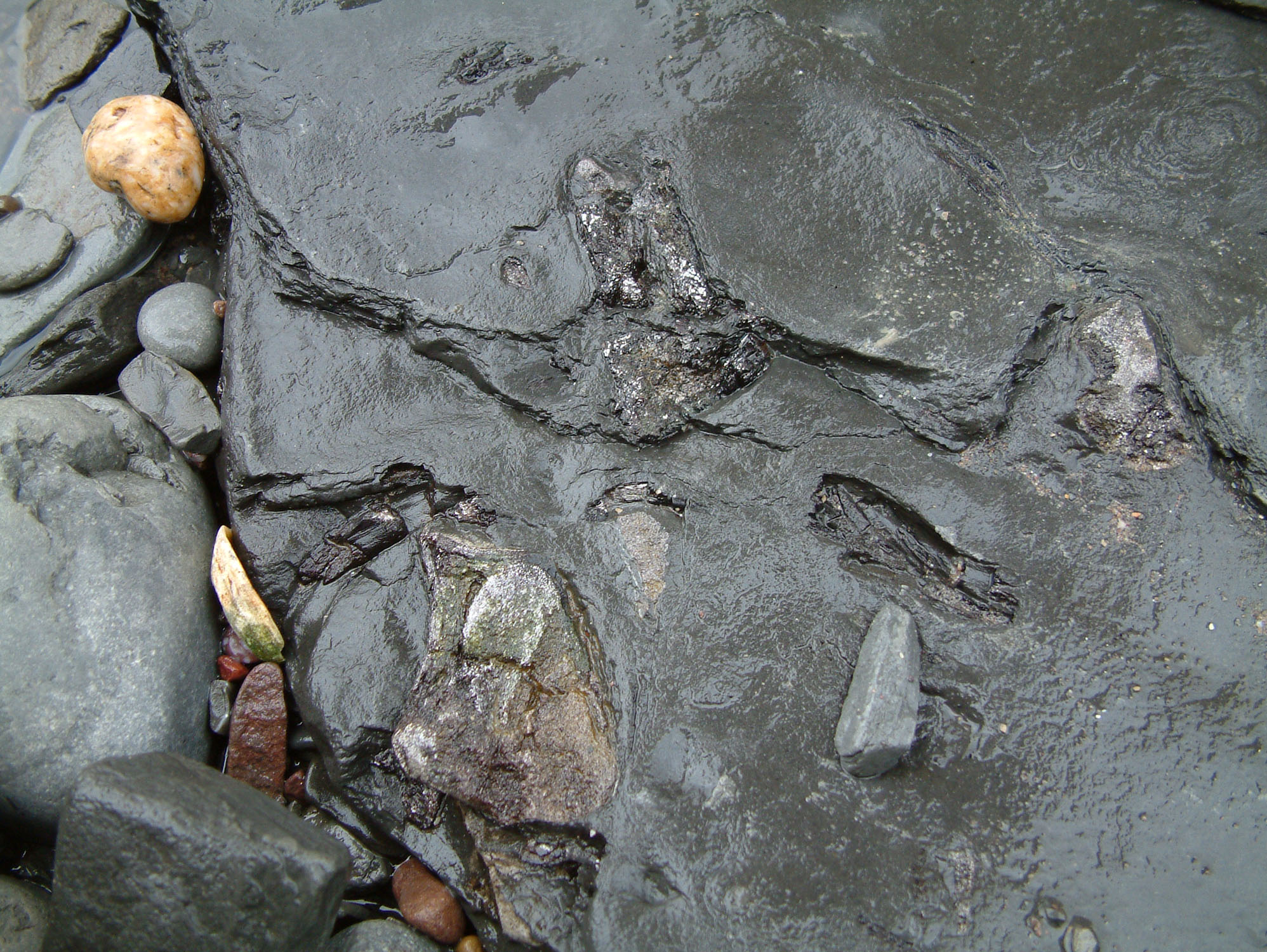At Hinkley Point, you can find complete fish and reptile skeletons exposed on the foreshore. Reptile and fish remains can also be found in the cliff or on the foreshore, for example, vertebras, scales and ribs. In addition, ammonites and shells can be found.
DIRECTIONS
♦ The old access route involved driving to the Hinkley Point nuclear power station visitor centre. However, this has closed and there is no access from Hinkley Point. However, access can be made from Knighton.
♦ Knighton is poorly signposted. The best way is to drive to Stogursey and, from there, you will see a signpost to the village of Burton. At Burton, a narrow road leads to Knighton. It is signposted on the right hand side as ‘Knighton’ across a wall. This cannot be seen if driving from Shurton and is easily missed.
♦ Follow the road through the village. It will then come to a left hand bend and a farm track. Follow this track up and over the hill, and up and over the next hill. You will see a large sign saying vehicles are not permitted past this point. However, there are plenty of parking spaces here, but you will need to walk the remainder of track.
♦ Continue to follow the farm track by foot until you reach the cliff. Walk right until the cliff dips. Here, you can easily descend to the shore. Carry on walking to the right along the foreshore.
♦ Ref: 51.20476°N, 3.16133°W
PROFILE INFO
FIND FREQUENCY: ♦♦♦ – This location is highly productive after winter storms for reptile and fish remains, but ammonites and shells are less common.
CHILDREN: ♦♦♦ – Although this location is suitable for families, it is best suited to the fossil enthusiast because most of the fossils can only be found after winter storms and high tides.
ACCESS: ♦♦♦ – Access to the beach can be made from Knighton. It used to be from the visitor centre at Hinkley point, but this is no longer possible.
TYPE: – This is a foreshore and cliff location, so fossils can be found in both. However, the vast majority of fossils are found exposed on the foreshore after high tides, or exposed on the foreshore during scouring conditions.
FOSSIL HUNTING
Ichthyosaur skeletons and remains are very common along this stretch of coastline. The photos on this page show slabs of an exposed Ichthyosaurus, which was then undergoing preparation. The skeleton was three quarters complete and took months before it was ready for display. Shells, ammonites and belemnites are also found at Hinkley Point. Fish remains and sometimes complete fish can also be found exposed on the foreshore and fish remains are often found in the shale of the same zone as the reptile remains.
At the base of the cliff, bones can be found in the first metre above normal beach height. Often, after high tides, these bones can be found by walking near the base of the cliff (but take extra care of falling rocks and wear a hard hat). However, by far the most likely place to find fossils is on the foreshore. Ammonites are mostly found this way, but areas of shale can also yield reptile remains or whole skeletons (if you are extremely lucky).

GEOLOGY
The Jurassic Blue Lias Formation at Hinkley Point is of Rhaetian age and can be rich in marine reptile remains.
The rocks here consist of thinly interbedded limestone and calcareous mudstone or siltstone This is the earliest of the Blue Lias Formation and further along the coast at Lilstock, Triassic rocks can be found at the base of the cliff.


SAFETY
Common sense when collecting at all locations should be used and knowledge of tide times is essential. You can easily be cut off by the tide as the sea always reaches parts of the cliff and wear a hard hat. There are also regular cliff falls along this part of the coast, so keep well away from the base of the cliff.
EQUIPMENT
Hinkley is a bit of an unpredictable location – sometimes you can come away with nothing and other times buckets full. Much depends on beach conditions, but always take the right tools such as hammers and chisels. A hard hat is recommended if going near the cliff.
PLEASE NOTE: Hinkley Point Power Station has some of the highest security measures, if you plan to visit via the station, you will need to contact the station prior to your visit or go to the reception. If you fail to do this, you may have a visit from security guards.
ACCESS RIGHTS
This site is an SSSI. This means you can visit the site, but hammering the bedrock is not permitted. For full information about the reasons for the status of the site and restrictions please download the PDF from Natural England – SSSI Information
It is important to follow our ‘Code of Conduct’ when collecting fossils or visiting any site. Please also read our ‘Terms and Conditions‘
LINKS
♦ Buy Fossils, Crystals, Tools
♦ Location Discussions
♦ Deposits Magazine
♦ Join Fossil Hunts
♦ UK Fossils Network






















